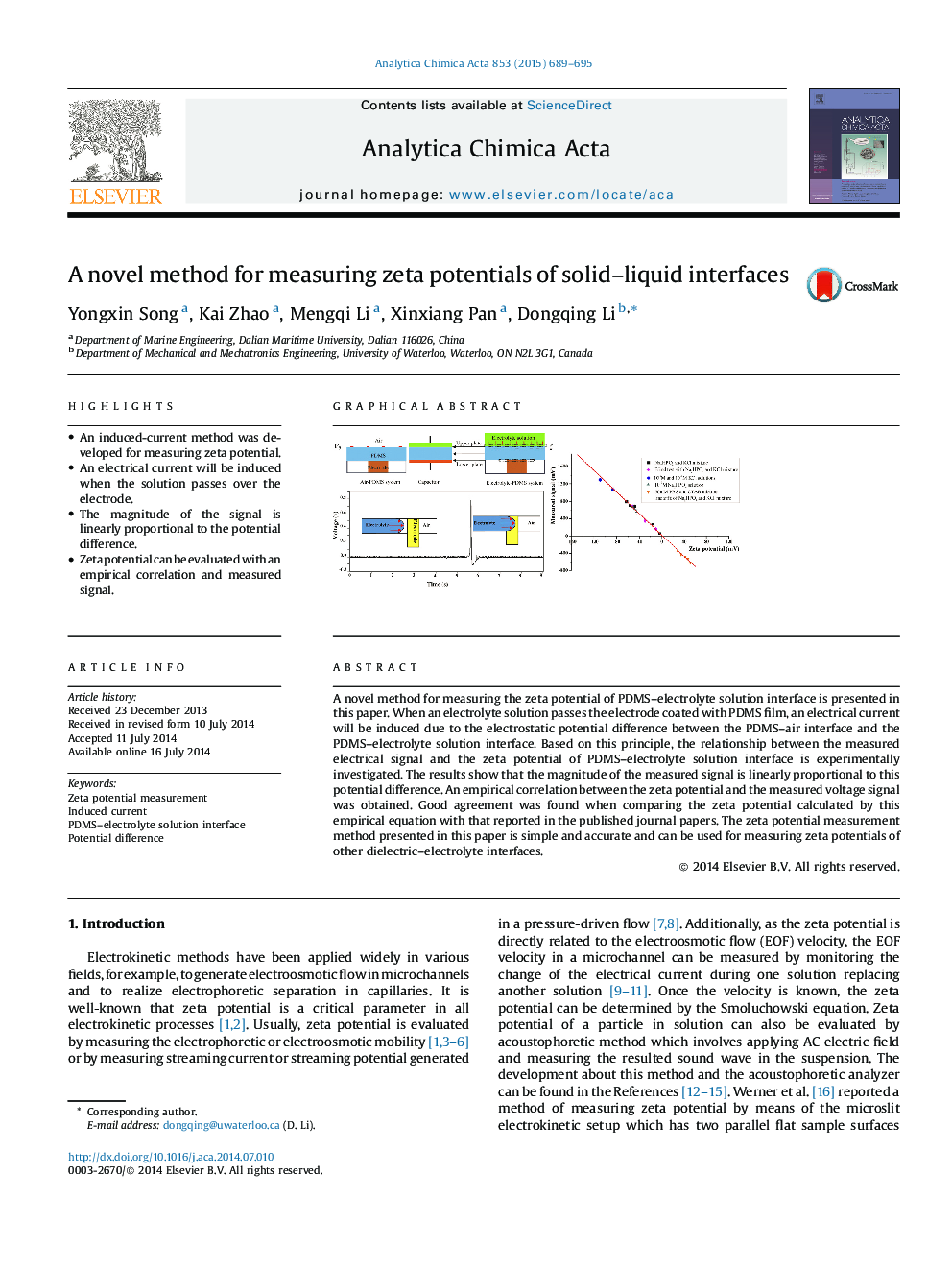| Article ID | Journal | Published Year | Pages | File Type |
|---|---|---|---|---|
| 1163714 | Analytica Chimica Acta | 2015 | 7 Pages |
•An induced-current method was developed for measuring zeta potential.•An electrical current will be induced when the solution passes over the electrode.•The magnitude of the signal is linearly proportional to the potential difference.•Zeta potential can be evaluated with an empirical correlation and measured signal.
A novel method for measuring the zeta potential of PDMS–electrolyte solution interface is presented in this paper. When an electrolyte solution passes the electrode coated with PDMS film, an electrical current will be induced due to the electrostatic potential difference between the PDMS–air interface and the PDMS–electrolyte solution interface. Based on this principle, the relationship between the measured electrical signal and the zeta potential of PDMS–electrolyte solution interface is experimentally investigated. The results show that the magnitude of the measured signal is linearly proportional to this potential difference. An empirical correlation between the zeta potential and the measured voltage signal was obtained. Good agreement was found when comparing the zeta potential calculated by this empirical equation with that reported in the published journal papers. The zeta potential measurement method presented in this paper is simple and accurate and can be used for measuring zeta potentials of other dielectric–electrolyte interfaces.
Graphical abstractFigure optionsDownload full-size imageDownload as PowerPoint slide
